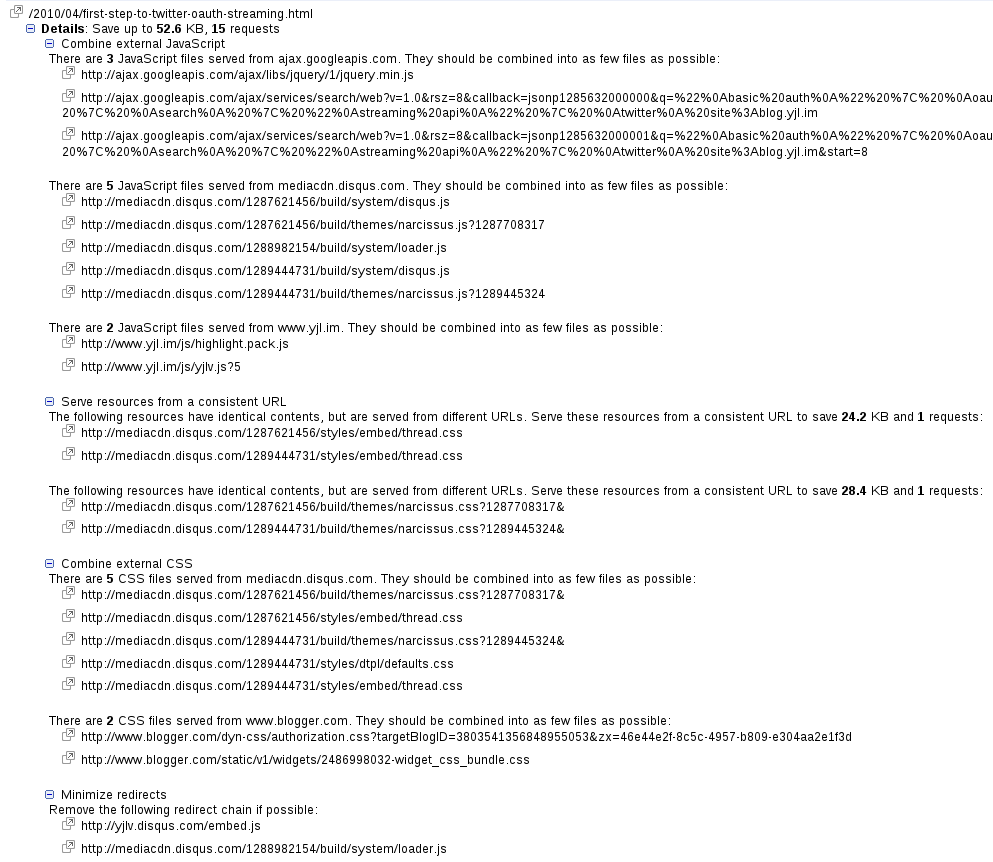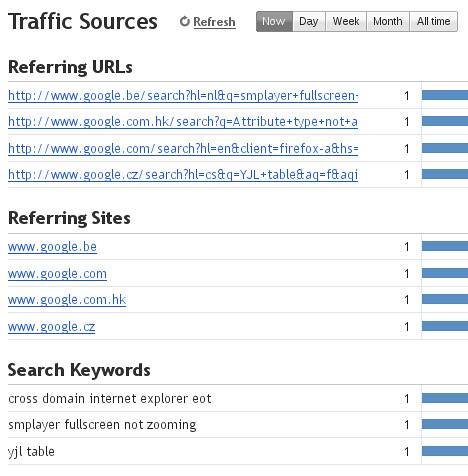Subscriber stats reports the number of subscribers to a sites RSS or Atom feeds. This functionality is currently provided in Feedburner, ...
Well, the fact is it is not, I have never read the exactly same statistics (will explain why not the same soon) in FeedBurner, clearly the poster, Jonathan Simon, Webmaster Trends Analyst, has no idea what information their productsSubscriber stats and FeedBurner Subscribers tabhave provided and are based. At least, not familiar with altogether.
Please, allow me to explain. Firstly, look at Subscriber stats (before it gets wiped):
You can see there are two entries, one is Atom feed and the other is RSS feed, basically by Blogger's default setting. The types may not be same if you redirect to other feed services. You don't see such information in detail in FeedBurner:
The subscriber counts of two feeds are included in Google Feedfetcher, and that's not I want to have and it shows you that FeedBurner is not a replacement and barely you can mark it as an alternative. FeedBurnder does not give you the information you have in Webmaster Tools, it's a summation with different sources. From the explanation:
Google Feedfetcher
Feedfetcher is how Google grabs RSS or Atom feeds when users subscribe to them in Google Reader or iGoogle. Subscriber counts include Google Reader and the iGoogle. Feedfetcher collects and periodically refreshes these user-initiated feeds, but does not index them in Blog Search or Google's other search services.
At first glance, it seems to say that it is same data as the one in Subscriber stats, but it is not, because that's not what you see. 62 != 21+3. Secondly, again, it's a summation, I would like to have more detail.
As you can see in the screenshot, it's the old FeedBurner interface, I should've switched to new interface and see if the information is there. Wait, where is the link to switch interface version?
It'd gone and I didn't notice until now. They probably had dropped the development some time ago and didn't even bother to post an announcement on FeedBurner's blog. Oh, yea, FeedBurner does have a blog, last post was published in October, 2010, you figure out right?
Why 62 != 21 + 3?
First of all, you need to know where are 21 and 3 from. They are statistics provided by Google Feedfetcher bot in User Agent. If you want to get the number for your Blogger blog, you need to redirect feed to a piece of code to intercept the user agent, then redirect it (again) to the real feed, for instance
/feeds/posts/default?orderby=update, which I think actually is where FeedBurner gets your content.The bottom line is, if FeedBurner does not provide such detail information, you need to have a intermediate server for catching those information in order to get individual numbers instead of just a summation.
Back to the question: Why do my blog has 62 subscribers in FeedBurner, when Webmaster Tools only reports 21 + 3.
This is because I have other Blogger blogs' feeds redirected to the same FeedBurner feed after I imported them into this blog.
Now, you should be aware of the problem are:
- You can't distinguish the subscribers of different types of feed.
- You can't tell the subscribers apart if they are redirected from different sources.
For people who don't care, it's fine with you, you are satisfied with a big chuck of number. I care more about this kind of detail. I want to know what type of feed is being subscribed to and how many are from my old blogs' feeds. Once Webmaster Tools removes Subscriber stats, I can't know about it unless I make a simple script to record the number, it's not hard, but i do not want to do that.
In fact, it only takes a few essential lines on Google App Engine. I wonder if there is a service which redirects to specific location and logs all HTTP headers for incoming requests.
However, there is a way to get that Atom feed subscriber count which I have known a long time. I can search my blog in Google Reader, I get exactly 21 subscribers reported with my blog's feed. The problem is the searching function is somewhat slow and it's strange for me to do such task every week.
[edited 2012-04-29T16:05:52Z: An easier way to get the subscriber count in Google Reader is to subscribe to the feed and gets the count via Feed settings... View details and statistics, guess I have to shamelessly subscribe to my own blog feed for the count.]
To be fair, I am not surprised that poster doesn't know about this (I assume). Google has too many products already, it's hard to know every bit. If you test their employees, I am sure most of them can't even name a half of all products which are still in active development. In my case, you need to have such experience to know there is some details missing in FeedBurner's report.
My conclusion is FeedBurner's Subscribers tab is not a replacement of Subscriber stats of Webmaster Tools. Unfortunately, I will live with it.
Beside this issue, other removals, such as the generation of robots.txt, I have no problem of that, because I never used that. But some may find that handy, maybe they should open source'd that part into a standalone page.
The last one is the Site Performance, I had used it once. I did want to see more from it, but I didn't know why there was no new data. Since Google Analytics has started to provide much more thorough data, down to each single page, which I have posted a few days ago.






